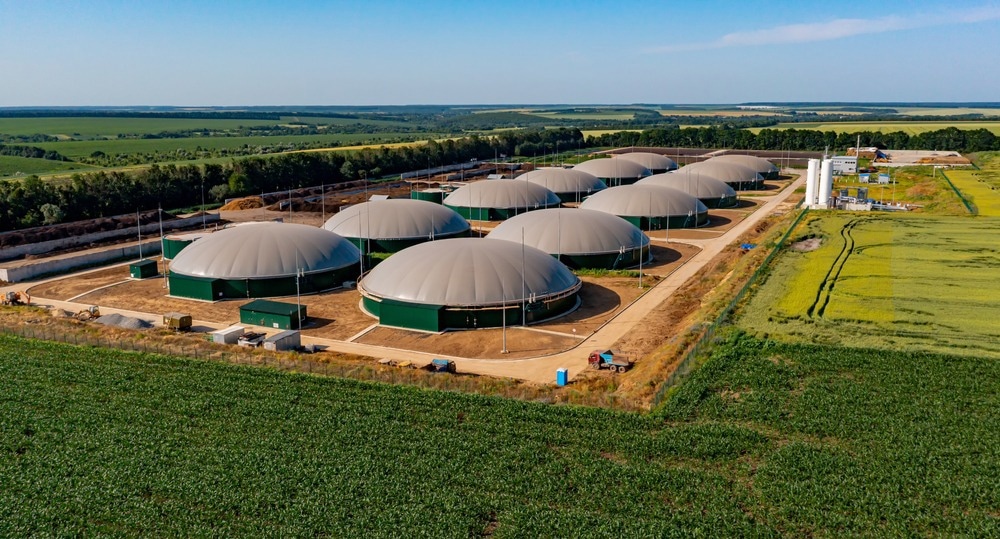A pre-proof paper published in the journal Environment Research focuses on using cellulose nanocrystals (CNCs) as fillers in the polyvinyl alcohol substrate to develop high-performance transport membranes for reducing carbon dioxide (CO2) emissions.

Study: Polyvinyl alcohol and aminated cellulose nanocrystal membranes with improved interfacial compatibility for environmental applications. Image Credit: Terelyuk/Shutterstock.com
The use of fossil fuels has been reducing in recent years because of climate change and decreasing supplies. In this context, developing eco-friendly technologies, renewable energy sources, and disposable materials is critical for several industries.
Biogas is by far the most attractive alternative to fossil fuels because it is a plentiful raw resource. It is produced as a by-product of the anaerobic decomposition of organic molecules. Raw biogas is composed of methane (CH4), carbon dioxide (CO2), and trace water concentrations.
Biogas Upgradation: Why is it Necessary?
Biogas is an effective energy source because it emits very few greenhouse gases. However, raw biogas has a poor efficiency for automotive applications because its high CO2 concentration diminishes its calorific and heating potential. Upgraded biogas contains up to 95 percent CH4 and may be used as an energy source instead of natural gas. Furthermore, enhanced biogas can cut NOx emissions by more than 25% and other organic chemical compounds by more than 50%.
Therefore, biogas upgradation is a useful method to control CO2 emissions and reduce greenhouse gases. Many techniques such as adsorption, pressure swing absorption, water scrubbing, and membrane technology are utilized for biogas upgradation. Membrane technology is preferred in all of these approaches because of its simplicity, dependability, low energy consumption, and cheap cost.
Cellulose Nanocrystals (CNCs) for Biogas Upgradation
Cellulose nanocrystals (CNCs) are particularly appealing materials for biogas upgradation because of their ease of availability, high degradability, and environmental friendliness. They have several unique properties such as structural durability, high swelling capability, high specific surface area, and low density, making them highly useful for membrane fabrication and biogas upgradation.
Cellulose is mostly employed in membrane-based applications like membrane separation, microfiltration, and dialysis because of its robust linear form with crystalline and amorphous portions. All of these characteristics suggest that CNCs could be employed as a filler in water-swollen polymer facilitated transport membranes (FTMs) for CO2 removal.
Polyvinyl alcohol (PVA) can be used to create asymmetrical permeable CNC membranes because of its hydrophilic nature, high physical toughness, minimal fouling tendency, pH tolerance, and biodegradable properties. PVA can also be utilized as the main and secondary polymeric material in the membrane fabrication process, influencing the morphology of cellulose nanocrystal membranes.
Highlights of the Current Research
In this study, the researchers created high-performance polyvinyl alcohol (PVA)-based FTM for CO2 absorption using surface-enhanced cellulose nanocrystals (CNCs) as multifunctional fillers. Polyvinyl alcohol (PVA) was employed as a polymer matrix because of its excellent oxygen barrier qualities and CO2 absorption capability.
Aminated cellulose nanocrystals (Am-CNC) were utilized as an additive in the PVA substrate. Scanning electron microscopy (SEM), Fourier-transform infrared spectroscopy (FTIR), and X-ray diffraction (XRD) were used to analyze the produced membranes. The structure and interface reactivity of the produced membranes were examined using these characterization techniques.
The extraction efficiency of the produced FTMs was tested at 5, 10, and 15 bar pressures and under varying humidity levels to evaluate the optimum operating parameters.
Important Findings of the Study
The researchers discovered that raising the quantity of filler and feed pressure had different effects on membrane filtration capacity. According to the FTIR analysis, the produced CNC membranes possess a porous morphology with optimal permeability and thickness for CO2 absorption.
The XRD findings revealed that the cellulose nanocomposites (CNCs) are crystalline, making them ideal for biogas upgradation. SEM was used to effectively examine the increase in membrane thickness and change in its permeability.
The feed pressure was found to be inversely proportional to membrane performance, and the best results were obtained at 5 bar pressure. As the gas pressure was increased, the performance of the membranes degraded.
When the feed pressure was raised from 5 to 15 bar, CO2 absorption decreased more than twofold and CO2/CH4 selectivity decreased by 27%.
The Am-CNC-based membrane had the best performance in terms of permeability and sensitivity. The moisture absorption ability of a PVA-based membrane was reduced from 85.04 to 58.84 percent by using Am-CNC, making Am-CNC an ideal filler in PVA-based membrane applications for CO2 separation and biogas upgradation.
Reference
Ahmad, S. et al. (2022). Polyvinyl alcohol and aminated cellulose nanocrystal membranes with improved interfacial compatibility for environmental applications. Environmental Research. Available at: https://www.sciencedirect.com/science/article/pii/S0013935122011203?via%3Dihub
Disclaimer: The views expressed here are those of the author expressed in their private capacity and do not necessarily represent the views of AZoM.com Limited T/A AZoNetwork the owner and operator of this website. This disclaimer forms part of the Terms and conditions of use of this website.